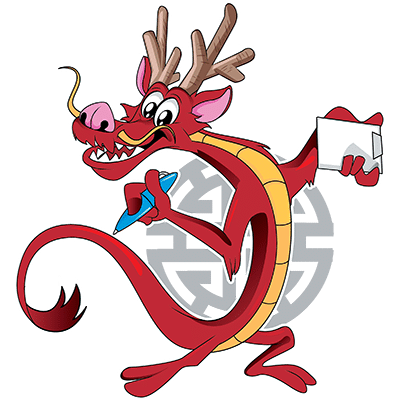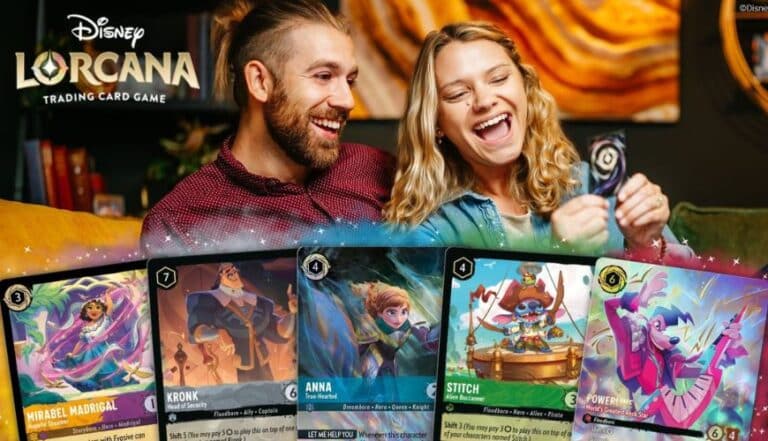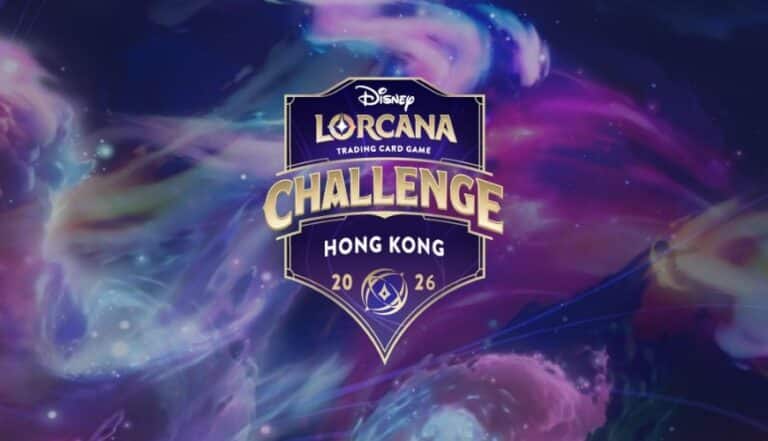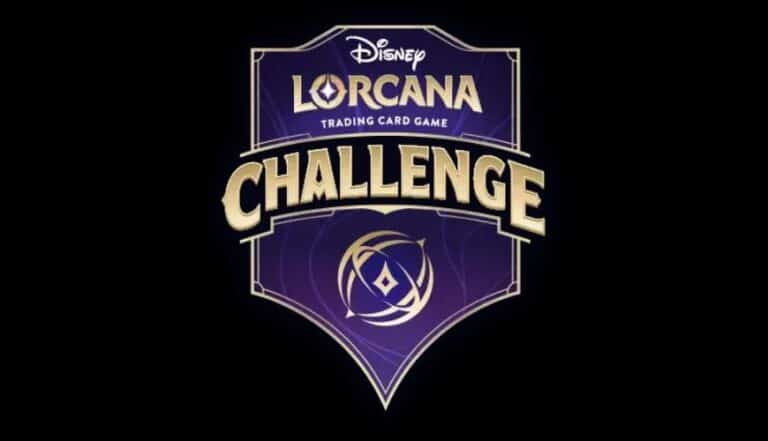If you ever had a burning question about Disney Lorcana rulings, you have some reading to do.
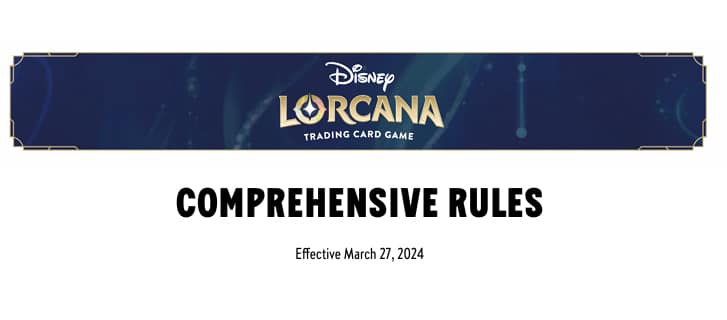
Disney Lorcana has finally received something that the community has been waiting for a long time, the Comprehensive Rules!
The Comprehensive Rules document can be found on the Disney Lorcana’s resource page or you can access them through the direct link here. The document covers the technical details of gameplay and are meant for high level Disney Lorcana rules questions, not as a way to learn the game.
This document is a living document and will be constantly updated, but here are some points we have spotted that may be interesting or useful to newer players.
1.2 Golden Rules
1.2.1. If the text of a card contradicts a game rule, the card effect supersedes that rule.
Example: The game doesn’t allow a character to challenge a ready character, but a player has a character with an ability that reads, “This character can challenge ready characters.” The ability overrides the game rule and allows that character to challenge a ready character.
1.2.2. If a rule or effect prevents something from happening, that rule or effect supersedes other rules and effects that allow it to happen.
Example: An effect says that players can’t play actions. Another effect instructs a player they may play an action for free. That player still can’t play an action.
1.2.3. Do as much as you can – If an effect tells a player to do something, even if some part of that effect can’t be done, the player does as much as possible, except in specific cases (see 7.1.2).
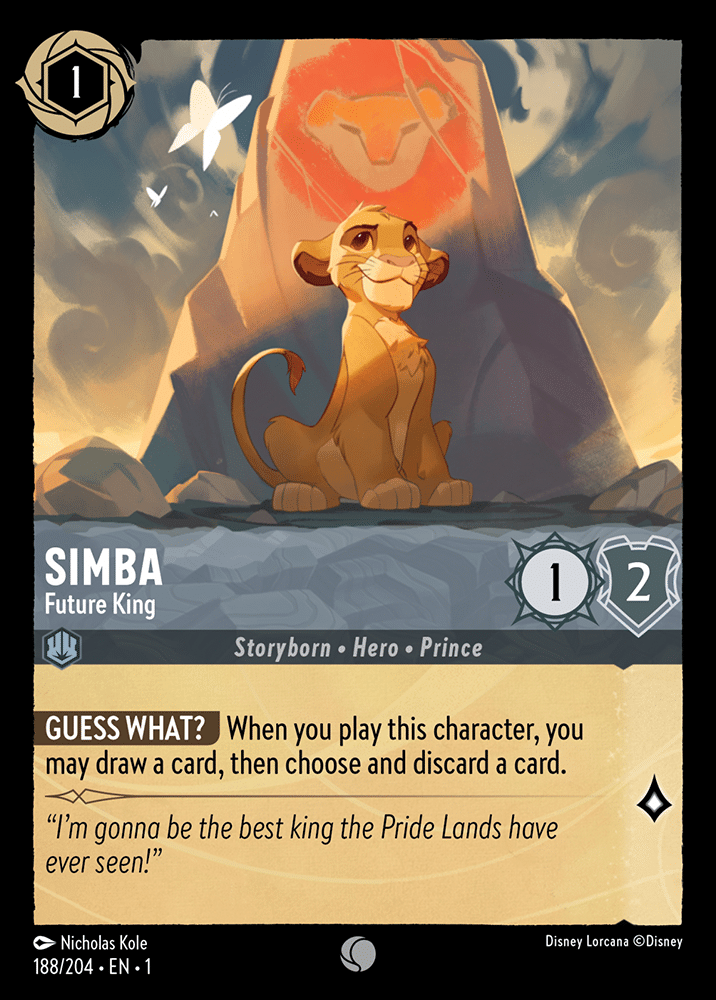
Example: Simba – Future King has an ability that reads, “When you play this character, you may draw a card, then choose and discard a card.” If an effect would prevent you from drawing a card, you’d still choose and discard a card.
1.6 Types of Abilities
1.6.1. There are several kinds of abilities in Disney Lorcana.
1.6.1.1. Keywords are words or shortened phrases that represent a larger ability. See section 9.0 for the full
list of current keywords.
1.6.1.2. Triggered abilities continuously look for a specific condition and have an effect when that condition is met. Triggered abilities follow the rules in section 7.4.
1.6.1.3. Activated abilities have a cost and an effect that occurs if that cost is paid. Activated abilities follow
the rules in section 7.5.
1.6.1.4. Static abilities are effects that are continuously present, either for a fixed length of time or for as
long as the card generating the effect is in play. Static abilities follow the rules in section 7.6.
1.6.1.5. Replacement effects are generated by some static abilities. These replace one effect with another.
Replacement effects follow the rules in section 7.7.
1.7 The Bag
1.7.1. The bag is the zone where triggered abilities wait to resolve. It’s not a physical zone but a way to picture the process of resolving triggered abilities. Think of each triggered ability as a marble and the bag as a place to put them until they’re resolved. Every marble is separate from every other marble, and a player can look through the bag of marbles to select the one they wish to resolve next.
1.7.2. It’s possible for both the active player and their opponent(s) to add triggered abilities to the bag at the same time. Resolving these abilities follows the rules in section 8.7, “Bag.”
2.1.2 Banned Cards
2.1.2. Banned cards – Some cards may be banned from organized play. Refer to the Disney Lorcana OP page for information on banned cards.
4.3.3 Play a card
4.3.3.1. A player can take the turn action of playing a card from their hand by announcing the card and paying its cost. This process follows a series of steps. If any part of the playing a card process can’t be
performed, it’s illegal to play the card and the game goes back to the point right before the card was
announced.
4.3.3.2. These steps apply to all cards that can be played. Cards can normally be played only from a player’s hand. Only the active player can play cards; no player may play a card on an opponent’s turn.
4.3.3.3. First, the active player announces the card they intend to play and reveals it from their hand.
4.3.3.4. Second, the player announces how they intend to play the card, whether for its ink cost or an
alternate cost. If multiple alternate costs could apply to the card, the player may choose one and
ignore the others for the purposes of playing the card.
4.3.3.5. Third, the player determines the total cost of the card. To do this, take the intended play method, add any additional costs, and subtract any cost reductions. Then the cost becomes fixed. If a card is
played “for free,” ignore all ink costs of playing it.
4.3.3.6. Fourth, the cost is paid. If the cost involves an ink cost, the player exerts a number of ink cards equal to that ink cost. The player can choose to pay the parts of a cost in any order, but all costs must be
paid completely.
4.3.3.7. Once the total cost is paid, the card is now “played.” If the card is a character, item, or location, the
card enters the Play zone. If it’s a character being played using its Shift ability, it must be put on top of the card indicated in the second step of this process. If the card is an action, the effect immediately resolves and the card goes to the player’s discard pile.
4.3.3.8. If an effect would trigger as a result of any of the steps to playing a card, that effect will wait to
resolve until the card and its effect are fully played and resolved.
4.3.5 Challenge Steps
4.3.5.4. To challenge, the active player follows the steps listed here, in order.
4.3.5.5. First, the player declares one of their characters is challenging a character. The declared character
must have been in play since the beginning of the turn (that is, they must be dry), ready, and
otherwise able to challenge.
4.3.5.6. Second, the player chooses an exerted opposing character to be challenged.
4.3.5.7. Third, the players check for challenging restrictions. If any effect prevents the challenge, the
challenge is illegal.
4.3.5.8. Fourth, the challenging player exerts the challenging character.
4.3.5.9. Fifth, the challenge occurs.
4.3.5.10. Sixth, while challenging” effects apply.
4.3.5.11. Seventh, effects that would trigger are added to the bag.
4.3.5.12. Eighth, once all effects in the bag have resolved, each character deals damage equal to their Strengths to the other character. This is known as the “Challenge Damage step.” This isn’t an ability or
effect and isn’t added to the bag.
4.3.5.13. To determine the damage each character in the challenge deals, first calculate the total Strength S
of each, taking into account any current modifier effects. This is the assigned damage.
4.3.5.14. Apply effects that adjust the amount of damage dealt (e.g., Resist).
4.3.5.15. The resulting number is the final amount of damage that character deals.
4.3.5.16. A character can have 0 S or less. If the final amount of damage a character deals is less than 0, it’s
treated as if it were 0 for the purposes of dealing damage. A character with 0 S deals no damage.
4.3.5.17. Ninth, once damage is dealt, any effects that would trigger as a result of the challenge are added to the bag.
4.3.5.18. Once all effects have resolved, effects that apply “while challenging” or “while being challenged”
end, and the challenge is over.
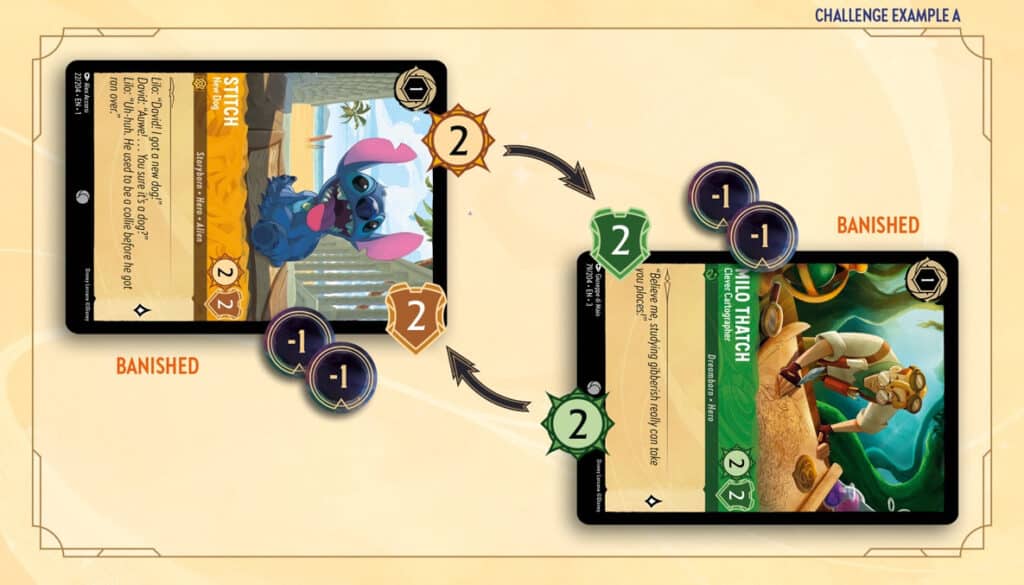
Example A: The active player has a ready Stitch – New Dog in play, and an opponent has an exerted Milo
Thatch – Clever Cartographer in play. The active player announces Stitch is challenging and chooses Milo
Thatch as the character being challenged. There are no restrictions or requirements to satisfy. No effects
trigger as a result of these declarations. The active player exerts Stitch.
Both Stitch and Milo Thatch deal damage equal to their Strength to the other. The active player and the
opponent each place damage counters on their character. A game state check is performed. There are no
effects that trigger from the check. The challenge is over.
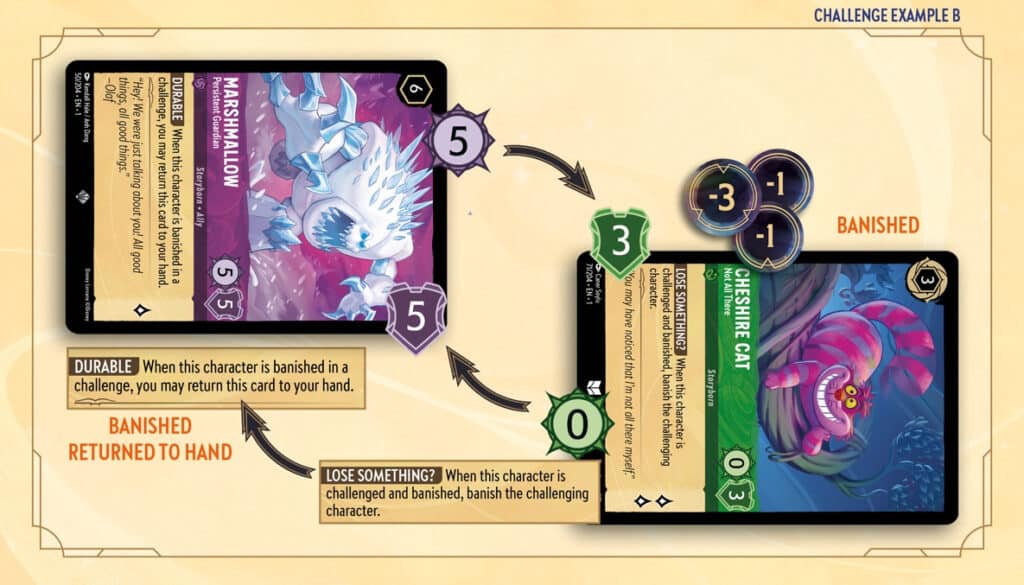
Example B: The active player declares Marshmallow – Persistent Guardian is challenging an opposing
Cheshire Cat – Not All There. Cheshire Cat’s ability Lose Something? reads, “When this character is
challenged and banished, banish the challenging character.” Marshmallow’s ability Durable reads, “When
this character is banished in a challenge, you may return this card to your hand.”
Marshmallow has 5 Strength, so he deals 5 damage to Cheshire Cat, who has 3 Willpower. When the game state check is made, Cheshire Cat is banished. This triggers Cheshire Cat’s ability, and the opponent adds it to the bag.
The opponent resolves the ability’s effect, banishing Marshmallow. Because the players haven’t reached
the step of the challenge in which the bag is resolved, they’re still in the challenge, and Marshmallow’s
ability is added to the bag by the active player. The active player can then resolve it, returning
Marshmallow to their hand. There are no more effects to add, and the bag is empty. The challenge is over.
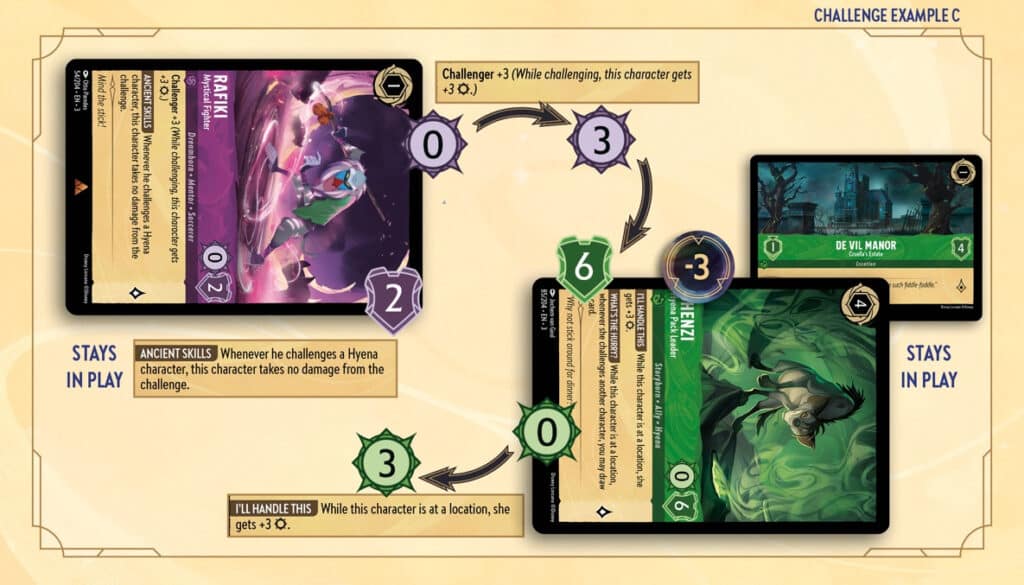
Example C: The active player declares Rafiki – Mystical Fighter is challenging an opposing Shenzi – Hyena
Pack Leader, who has 0 Strength and is at De Vil Manor – Cruella’s Estate. De Vil Manor has no abilities, but Shenzi’s ability I’ll Handle This gives her +3 Strength while she’s at a location.
Rafiki’s ability Ancient Skills reads, “Whenever he challenges a Hyena character, this character takes no
damage from the challenge.” After restrictions and requirements are checked, the active player adds this
ability to the bag. The active player then resolves that effect. When the challenge proceeds to the
Challenge Damage step, Rafiki won’t be dealt any damage.
8.2 Deck
8.2.2. Any player may count the remaining cards in any player’s deck at any time.
8.2.4. If cards are added to the top or bottom of a deck in any order and the cards were publicly known to all players, the order in which the cards are added to the deck must be known by all players.
8.7 Bag
8.7.1. Whenever a triggered ability’s condition is met, the ability is added to the bag. Only abilities can exist in the bag. Unlike other zones, the bag isn’t a physical zone but is only where triggered abilities created by the game wait to resolve.
8.7.2. Activated abilities, resolving actions, and playing characters, locations, or items aren’t added to the bag.
8.7.3. Whenever a triggered ability happens, it’s added to the bag by the player who added it. If multiple triggered abilities happen at the same time, they’re added to the bag simultaneously by the respective players.
8.7.4. Once there are no more abilities waiting to be added to the bag, the active player chooses and resolves any one of their abilities. An ability must finish resolving before the next can be chosen. If the resolution of an ability triggers another ability, the triggered ability is added to the bag once the current ability is finished resolving.
8.7.5. If there are abilities from multiple players in the bag, the active player chooses and resolves all of their abilities first, including any that were added as a result of resolving abilities. They continue to resolve their abilities until they have no more to resolve.
8.7.6. The next player resolves all of their abilities following the guidelines in 8.7.5.
8.7.7. Once the bag is empty and all players have no more abilities to resolve or turn actions to take, the players proceed to the next step or phase of the game.
8.7.8. If a player leaves the game while abilities are still waiting to resolve in the bag, those abilities cease to exist.
These are just some of the points we have spotted that are interesting to go through. For more details, check out the Comprehensive Rules document linked here.
